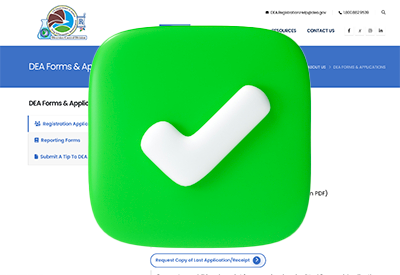How to Select a Stimulant for Adult ADHD

Gregory Malzberg, MD. Attending Psychiatrist & Assistant Clinical Professor, Mount Sinai West, New York, NY. Creator, PsychoFarm.
Dr. Malzberg has no financial relationships with companies related to this material.
Raj, a 37-year-old accountant, comes to you for ADHD treatment. He tried Adderall instant release when he was in college, which helped but caused irritability in the morning and an intolerable crash in the afternoon. His current symptoms are interfering with his work and family life. He wants to start treatment again but worries about his past experience with a stimulant.
With over 30 stimulant formulations, choosing one can seem daunting. In this article, I’ll highlight the differences between the available stimulants and review the major areas where formulations differ.
Methylphenidate vs amphetamine
When it comes to treating ADHD, stimulants are our first-line treatment. All the stimulants we use for ADHD are based on two key ingredients, methylphenidate and amphetamine. Both of these ingredients boost dopamine and norepinephrine levels in the brain. Methylphenidate blocks norepinephrine and dopamine reuptake transporters, keeping more neurotransmitters in the synapse. Amphetamines do this too, but they also displace stored dopamine and norepinephrine, releasing even more into the synapse (Faraone SV, Neurosci Biobehav Rev 2018;87:255–270). This extra action might explain why amphetamines have slightly greater rewarding qualities, as well as potential for misuse (Bright GM, Medscape J Med 2008;10(5):111).
Which should you reach for first, an amphetamine or a methylphenidate? Many guidelines are agnostic about this choice. Meta-analyses show amphetamines are modestly more effective, but at the cost of more side effects and diversion risk (Cortese S et al, Lancet Psychiatry 2018;5(9):727–738). Methylphenidate may be less likely to trigger mania or psychosis and is safer across most of the comorbidities we see in our patients (Moran L et al, N Engl J Med 2019;380:1128–1138). Stimulants can be neurotoxic in high doses, and this toxicity is more pronounced with amphetamines than methylphenidate, which may also have neuroprotective effects in some diseases (Volz TJ, Curr Neuropharmacol 2008;6(4):379–385).
Overall, methylphenidate is the safer choice, especially in patients with comorbidities. It is better tolerated but may be less effective in some patients. Amphetamines pose greater risks, particularly for children, seniors, and those vulnerable to drug misuse. That’s why methylphenidate is often the preferred starting point.
After choosing a stimulant, I give my patients a one- to two-month trial and have them rate their symptoms before and after using a scale, such as the Adult ADHD Self-Report Scale (ASRS). A 50% improvement in scale score is a good outcome from a symptom standpoint. If the current medication doesn’t provide satisfactory results after careful evaluation, I’ll consider adjusting the dose or switching to another stimulant class.
Key factors in selecting a stimulant formulation
Once you’ve selected the core ingredient, there is still a daunting list of formulations to choose from. I will highlight the key differences by focusing on three main factors:
Enantiomer mixtures
Route of administration
Release mechanisms and duration of action
Enantiomer mixtures
Both amphetamine and methylphenidate products come as two enantiomers. These enantiomers are mirror-image shapes, like the differences between your left and right hand. Enantiomer drugs don’t act the same, just as opposite-hand scissors cut differently. For amphetamines, the left hand is levo-amphetamine, and the right hand is dextro-amphetamine. For methylphenidate, the left hand is levo-methylphenidate, and the right hand is dex-methylphenidate.
For amphetamine, dextro-amphetamine is two to four times more potent than levo-amphetamine. Levo-amphetamine lasts longer and carries a higher risk of cardiac effects. Some patients feel more wired or jittery on levo-amphetamine. For this reason, most amphetamine products contain more of the dextro-amphetamine, which makes up 75% or 100% of most formulations. (Evekeo, at 50%, is the lone exception.) For an overview of the enantiomer percentage for each amphetamine brand medication, see the table “Amphetamine Brands and Their Enantiomer Compositions" below.
Take Adderall, which is comprised of “mixed amphetamine salts.” All these consist of two active components, levo-amphetamine and dextro-amphetamine, in a 3:1 ratio (in other words, 75% dextro-amphetamine and 25% levo-amphetamine).
For methylphenidate, the dex-enantiomer accounts for nearly all the drug’s potency.
Methylphenidate medications come as either a racemic mixture (50% of each isomer) or pure dex-methylphenidate (see the table “Methylphenidate Brands and Their Enantiomer Compositions”).
For the amphetamines, I start with 75% or 100% dextro-amphetamine. There’s little reason to use the 50% dextro-amphetamine. With methylphenidates, either isomer mix is a reasonable option.
If a patient experiences a positive response to a medication but reports troubling side effects, consider exploring different enantiomer mixtures within the same stimulant class.

Route of administration
Stimulants come in various routes of administration, including:
Pills (tablets/capsules)
Orally dissolving tablets (ODTs)
Chewables
Liquids
Patches
All the formulations aside from pills are brand only (for a breakdown of these other formulations, see the table “Stimulants: Special Routes of Administration”). The ODT, chewable, and liquid routes don’t offer much advantage unless the patient has difficulty swallowing pills. You can remove the Daytrana patch for an “off switch,” a feature no other stimulant offers. The patch also offers the benefit of bypassing the gut but comes with a rare risk of permanent skin discoloration.
These different routes of administration were developed with children in mind. For adults, I tend to stick with pills unless they have difficulty swallowing.


Release mechanisms and duration of action
The first marketed stimulants were instant release. These formulations work fast, usually within minutes, but they don’t last long, requiring multiple doses throughout the day.
Pharmaceutical companies were quick to develop sustained-release mechanisms, starting with Dexedrine Spansules in 1952. These formulations improve adherence and provide more consistent effects by smoothing out the peaks and troughs of the serum levels, which in turn reduces abuse potential (Daughton JM and Kratochvil CJ, J Am Acad Child Adolesc Psychiatry 2009;48(3):240–248). For an overview of the duration of action of each stimulant, see the table “Stimulant Durations” below.
That consistency is why we choose a long-acting medication first. However, you might still use short-acting stimulants for sensitive patients looking for low doses that are unavailable in long-acting forms. Short-acting medications offer more flexibility for patients and can extend the effects of long-acting treatments when patients need late afternoon coverage. Another common strategy is to start with instant release and convert to a long-acting form once the dosage is established.
One type of release mechanism that offers a meaningful advance is the abuse-deterrent prodrug. Prodrugs contain molecular locks that must be cleaved off to activate the drug. The chemical names reveal their composition. Lisdexamfetamine combines lysine (lis) and dextro-amphetamine (which is known as dexamfetamine in British English). Serdexmethylphenidate combines serine (ser) and dex-methylphenidate.
Vyvanse is the brand name of lisdexamfetamine. The brand name containing serdexmethylphenidate is Azstarys, which contains 70% prodrug and 30% unmodified dex-methylphenidate. Why include the unmodified drug, when it removes the potential benefits of the prodrug? Serdexmethylphenidate on its own has an unfavorable pharmacokinetic profile, most notably a delayed onset of action, and thus is unsuitable for patients with ADHD. For now, Vyvanse is the only entirely prodrug stimulant available.
Besides acting as a padlock, the lysine in Vyvanse creates a novel release mechanism because the drug is slowly activated as the inert chemical is cleaved off. This metabolic rate-limiting mechanism has two advantages. First, patients seem to appreciate the consistent blood levels—they report experiencing fewer ups and downs compared to other formulations. Second, prodrugs lower abuse potential because of their slow release and decreased euphoric benefit in injecting or snorting them, as they are not activated that way.
For methylphenidates, I choose Concerta for its long, reliable duration. For amphetamines, I usually pick between Vyvanse or Adderall XR. Many patients have heard of Adderall and prefer to start with the better-known medication. I like that Vyvanse is harder to abuse, and my patients report a smooth, consistent, long-acting effect. For patients who respond well to Adderall XR but need a longer duration, the 16-hour Mydayis is an option.

Converting between stimulants
Switching stimulant medications has become more common due to shortages in the supply chain. While stimulant interruptions are not medically dangerous, they can cause withdrawal problems and leave patients with untreated ADHD symptoms that impair their lives (and driving). When there is a shortage in a patient’s usual medication, often the only way to avoid interruption is to switch to a formulation that is available.
We have guidelines for conversions between formulations in the table “Stimulant Conversions.” However, switching stimulants is not as straightforward as the table makes it appear. I’ve seen many patients report greater side effects on the new stimulant, even when the conversion indicated a lower dose than their previous formulation. Patients often report jitteriness and side effects when switching to an isomer ratio that would predict the opposite.
Different release mechanisms have different rates of absorption, leading to variable blood levels, efficacy, and tolerability. Careful monitoring and dosage adjustments are crucial for a smooth transition. As long as the final dose is within the approved range, I trust my patient’s experience over the theoretical conversion factor.
Carlat Verdict: When choosing a stimulant, start with a methylphenidate product. Amphetamines are more potent, but they also come with more side effects and risks. Start with a long-acting formulation and consider prodrugs to minimize misuse. While not perfect, dosing conversion guides can ease a formulation change.
Newsletters
Please see our Terms and Conditions, Privacy Policy, Subscription Agreement, Use of Cookies, and Hardware/Software Requirements to view our website.
© 2025 Carlat Publishing, LLC and Affiliates, All Rights Reserved.


_-The-Breakthrough-Antipsychotic-That-Could-Change-Everything.jpg?1729528747)



